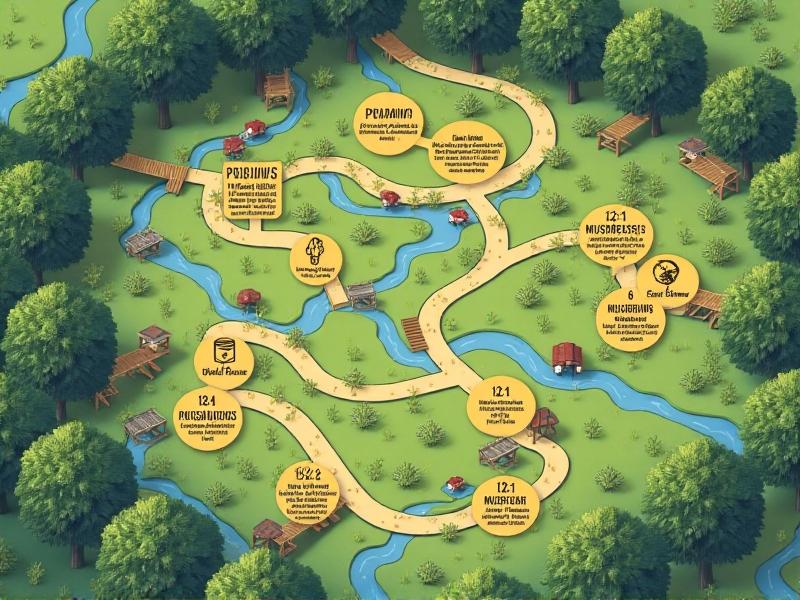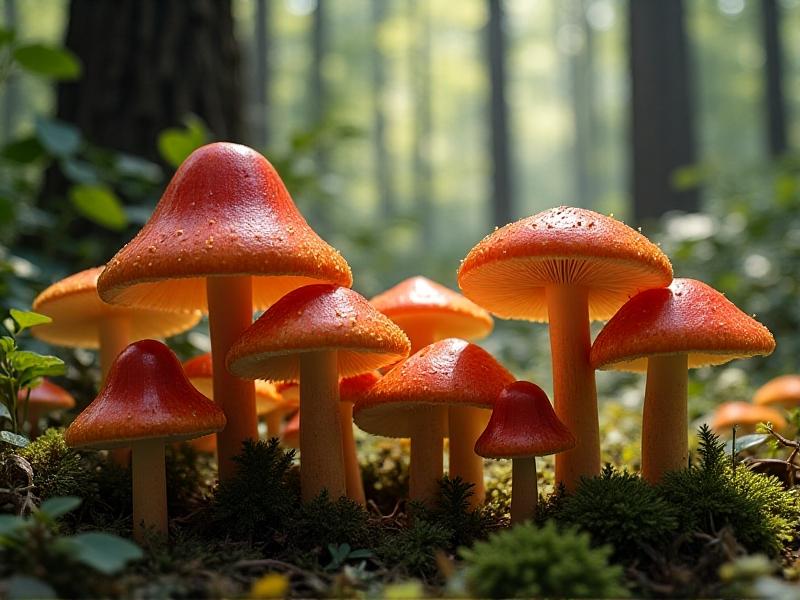Creating Foraging Trail Networks in Suburban Green Spaces
The Benefits of Foraging Trail Networks in Suburban Green Spaces
Foraging trail networks in suburban green spaces offer a unique opportunity to reconnect with nature, promote sustainability, and foster community engagement. These trails provide access to edible plants, herbs, and fungi, encouraging people to explore their local environment while learning about the natural resources available to them. By integrating foraging into suburban areas, we can create a more sustainable food system, reduce food miles, and enhance biodiversity. Additionally, foraging trails can serve as educational tools, teaching people about the importance of preserving natural habitats and the role of native plants in local ecosystems.

Designing a Foraging Trail Network: Key Considerations
Designing an effective foraging trail network requires careful planning and consideration of various factors. First, it’s essential to identify suitable green spaces that can support foraging activities without disrupting local ecosystems. This includes assessing soil quality, plant diversity, and accessibility. Next, the trail layout should be designed to minimize environmental impact while providing a safe and enjoyable experience for users. Signage and educational materials should be incorporated to guide foragers and provide information about the plants they encounter. Collaboration with local botanists, ecologists, and community members is crucial to ensure the trail network is sustainable and beneficial for both people and the environment.

Identifying and Cultivating Edible Plants
One of the most important aspects of creating a foraging trail network is identifying and cultivating edible plants that are native to the area. This involves researching local flora and selecting species that are safe, nutritious, and easy to identify. Common edible plants include berries, nuts, herbs, and leafy greens. It’s also important to consider the seasonality of these plants and ensure a diverse selection is available throughout the year. In some cases, it may be necessary to cultivate certain plants to enhance the foraging experience. This can be done through planting initiatives or by encouraging the growth of wild edible species. By focusing on native plants, we can support local ecosystems and reduce the risk of introducing invasive species.

Engaging the Community in Foraging Initiatives
Community engagement is a vital component of successful foraging trail networks. By involving local residents in the planning and maintenance of these trails, we can foster a sense of ownership and pride in the project. Workshops, guided foraging tours, and educational programs can help raise awareness about the benefits of foraging and teach people how to safely and responsibly harvest wild plants. Social media and local events can also be used to promote the trails and encourage participation. Additionally, partnerships with schools, community groups, and local businesses can provide valuable support and resources. Engaging the community not only enhances the success of the foraging trail network but also strengthens social connections and promotes a culture of sustainability.
Ensuring Sustainability and Environmental Protection
While foraging trail networks offer numerous benefits, it’s crucial to ensure they are designed and managed in a way that protects the environment and promotes sustainability. This includes implementing guidelines for responsible foraging, such as harvesting only what is needed and avoiding rare or endangered species. Regular monitoring and maintenance of the trails can help prevent overharvesting and ensure the health of the ecosystem. Additionally, efforts should be made to minimize the impact of human activity on wildlife and natural habitats. By prioritizing sustainability, we can create foraging trail networks that are not only beneficial for people but also contribute to the preservation and enhancement of suburban green spaces.
Overcoming Challenges in Foraging Trail Development
Developing foraging trail networks in suburban green spaces is not without its challenges. One of the primary obstacles is gaining the support of local authorities and stakeholders, who may have concerns about safety, liability, or environmental impact. Addressing these concerns requires clear communication, thorough planning, and the presentation of compelling evidence about the benefits of foraging trails. Another challenge is ensuring the trails are accessible to all members of the community, including those with mobility issues or limited knowledge of foraging. Solutions may include creating wheelchair-accessible paths, providing clear signage, and offering educational resources. By proactively addressing these challenges, we can create foraging trail networks that are inclusive, sustainable, and widely supported.
Case Studies: Successful Foraging Trail Networks
Examining successful foraging trail networks can provide valuable insights and inspiration for new projects. For example, the Edible Park in Asheville, North Carolina, is a community-driven initiative that has transformed a public park into a thriving foraging space. The trail features a variety of edible plants, educational signage, and regular workshops, making it a popular destination for locals and visitors alike. Another example is the Urban Food Forest in Seattle, Washington, which integrates foraging trails with urban agriculture, creating a multifunctional green space that supports food security and community engagement. These case studies highlight the potential of foraging trail networks to enhance suburban green spaces and provide a model for other communities to follow.
The Future of Foraging Trail Networks
As interest in sustainability, local food systems, and outdoor recreation continues to grow, the future of foraging trail networks looks promising. Advances in technology, such as mobile apps and augmented reality, could enhance the foraging experience by providing real-time information about plants and their uses. Additionally, the integration of foraging trails with other green infrastructure projects, such as urban farms and wildlife corridors, could create multifunctional spaces that benefit both people and the environment. By continuing to innovate and collaborate, we can expand the reach and impact of foraging trail networks, making them a staple of suburban green spaces around the world.







